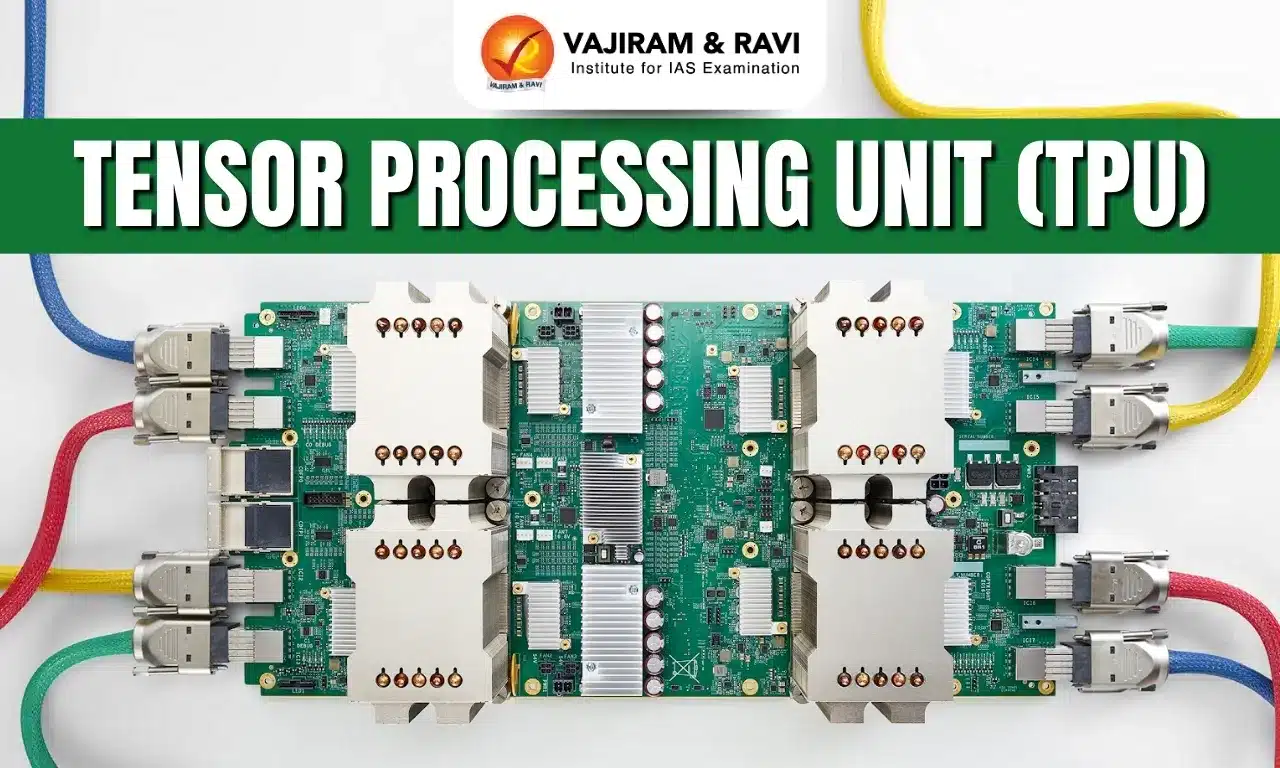AI Basics: CPU, GPU and TPU Latest News
How TPU is Different from CPU and GPU
About Processing Units
- Processing units are the core hardware components that act as the brain of a computer. They perform tasks such as calculations, processing images, and transmitting data, similar to how the human brain executes complex tasks.
What is a CPU (Central Processing Unit)?
- The CPU is a general-purpose processor that was developed in the 1950s and can handle a wide variety of tasks.
- It functions like a conductor in an orchestra, coordinating the operations of all other computer parts like GPUs, disk drives, and memory units.
- A CPU contains cores — individual units that execute instructions. Early CPUs had only one core, but modern CPUs may contain 2 to 16 cores.
- Each core can handle one task at a time, so a CPU’s multitasking capacity depends on the number of cores.
- For everyday users, 2 to 8 cores are usually sufficient, and CPUs are so efficient that users rarely notice that tasks are completed sequentially, not simultaneously.
What is a GPU (Graphics Processing Unit)?
- A GPU is a specialised processor designed to perform many tasks simultaneously, using a technique called parallel processing.
- Unlike CPUs, which process tasks sequentially, GPUs break down complex tasks into thousands or millions of smaller problems, solving them in parallel.
- Modern GPUs contain thousands of cores, making them far more suitable for intensive computational tasks.
- Initially developed for rendering graphics in gaming and animation, GPUs are now widely used in machine learning and artificial intelligence.
- GPUs have evolved into general-purpose parallel processors, making them a key tool in running AI models and handling large data operations.
- However, GPUs have not replaced CPUs, because certain operations are better handled sequentially, which is the strength of CPUs.
What is a TPU (Tensor Processing Unit)?
- A TPU is also a type of ASIC (Application-Specific Integrated Circuit), meaning it is built for a specific function — in this case, AI tasks.
- First introduced by Google in 2015, TPUs are specially designed hardware units built from the ground up to handle machine learning operations.
- TPUs focus on processing tensors — the multidimensional data arrays used in AI model computations.
- They are optimised to run neural networks efficiently, enabling faster training and execution of AI models than GPUs or CPUs.
- For example, training an AI model that may take weeks on a GPU can often be completed in hours using a TPU.
- TPUs are used at the core of Google’s major AI services, such as Search, YouTube, and DeepMind’s large language models, illustrating their real-world application in high-scale AI infrastructure.
Source: IE
Last updated on November, 2025
→ Check out the latest UPSC Syllabus 2026 here.
→ Join Vajiram & Ravi’s Interview Guidance Programme for expert help to crack your final UPSC stage.
→ UPSC Mains Result 2025 is now out.
→ UPSC Notification 2026 is scheduled to be released on January 14, 2026.
→ UPSC Calendar 2026 is released on 15th May, 2025.
→ The UPSC Vacancy 2025 were released 1129, out of which 979 were for UPSC CSE and remaining 150 are for UPSC IFoS.
→ UPSC Prelims 2026 will be conducted on 24th May, 2026 & UPSC Mains 2026 will be conducted on 21st August 2026.
→ The UPSC Selection Process is of 3 stages-Prelims, Mains and Interview.
→ UPSC Result 2024 is released with latest UPSC Marksheet 2024. Check Now!
→ UPSC Prelims Result 2025 is out now for the CSE held on 25 May 2025.
→ UPSC Toppers List 2024 is released now. Shakti Dubey is UPSC AIR 1 2024 Topper.
→ UPSC Prelims Question Paper 2025 and Unofficial Prelims Answer Key 2025 are available now.
→ UPSC Mains Question Paper 2025 is out for Essay, GS 1, 2, 3 & GS 4.
→ UPSC Mains Indian Language Question Paper 2025 is now out.
→ UPSC Mains Optional Question Paper 2025 is now out.
→ Also check Best IAS Coaching in Delhi
AI Basics: CPU, GPU and TPU FAQs
Q1. What is the role of a CPU in Artificial Intelligence?+
Q2. What makes a GPU important for AI tasks?+
Q3. What is a TPU in AI computing?+
Tags: ai basics prelims pointers upsc prelims current affairs

















